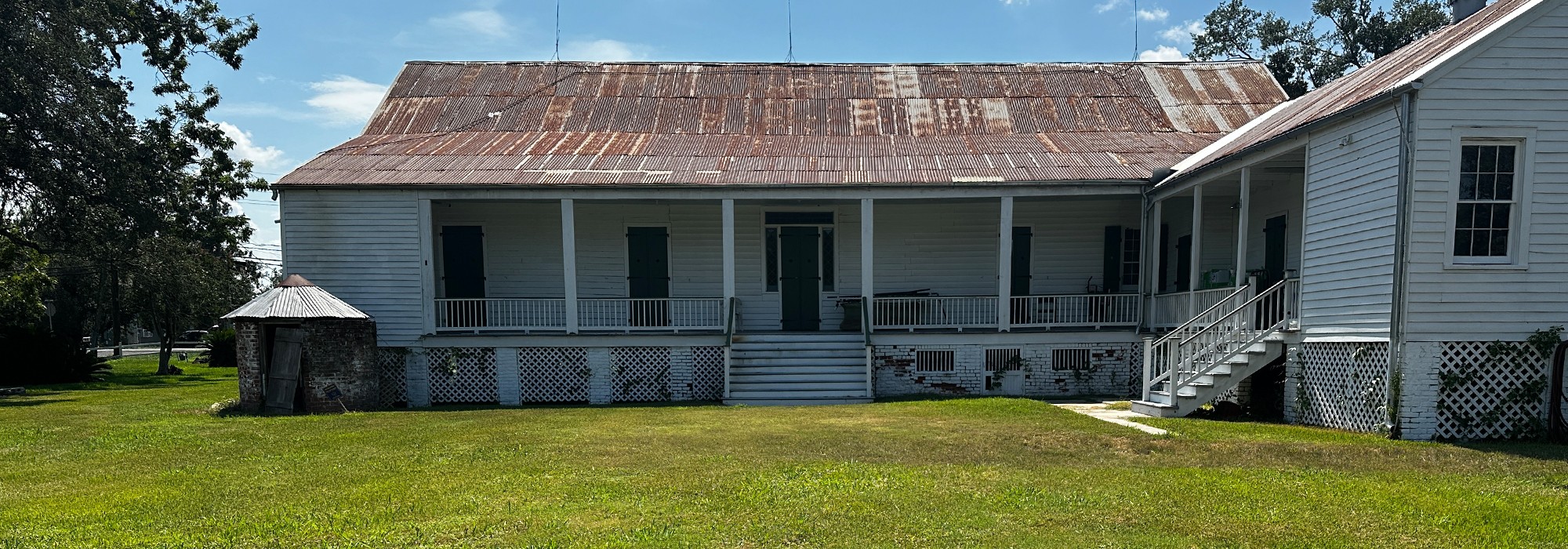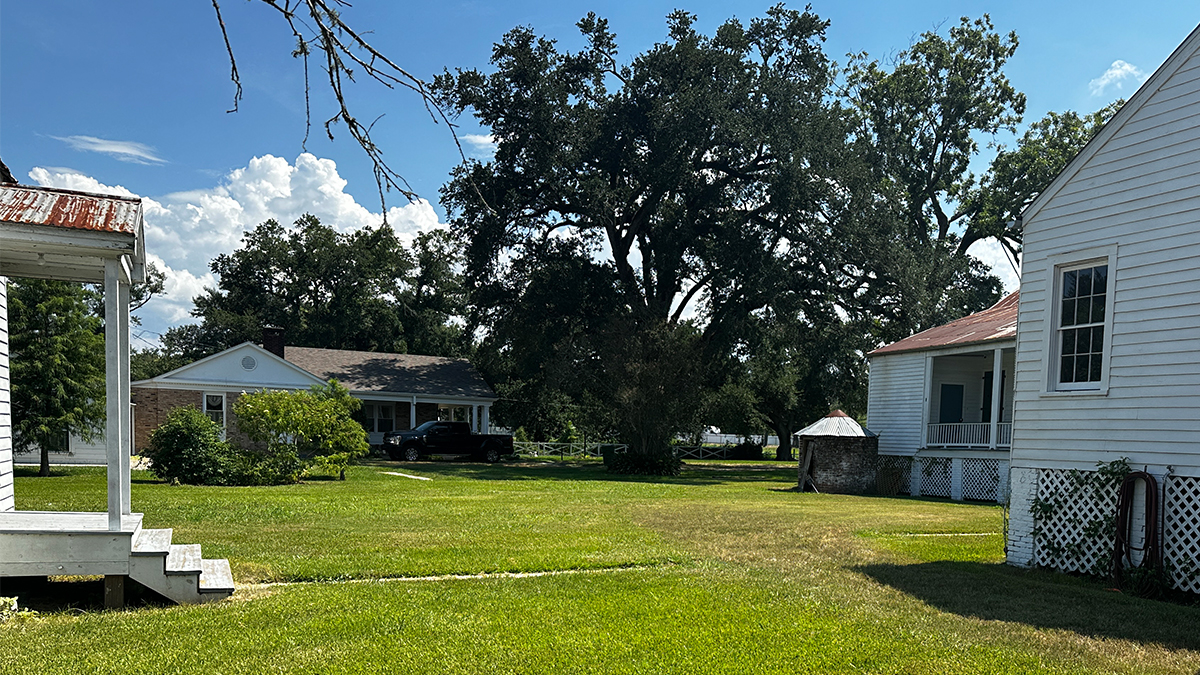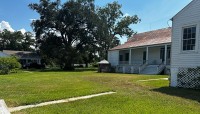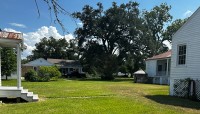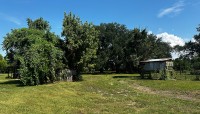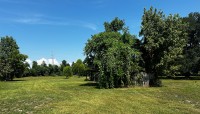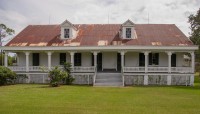Landscape Information
Located half a mile northeast of the Mississippi River in a low-rise residential neighborhood, this 3.61-acre property was originally part of an approximately 2,000-acre sugar plantation established in the late eighteenth century by Colonel Manuel Andry. Bound by East Fifth Street and railroad tracks the property features a former plantation house (1793).
In 1811 the Freedom Fight of the Enslaved (The German Coast Uprising) was initiated on the property by Charles Deslondes. During the two-day insurrection, regarded as the largest such event in American history, participants marched south towards New Orleans following the levee on the eastern bank of the Mississippi River.
In 1886 Jazz musician and composer Edward “Kid” Ory was born on the plantation, which was acquired by members of his family in 1898. In 1923 the plantation was subdivided and sold, leading to the development of LaPlace. During the Great Depression the residence served as a boarding house, accommodating laborers working on the Bonnet Carré Spillway (1931).
Vacated in 2005, the property suffered from neglect for more than a decade. In 2017 the house was rehabilitated and from 2021-2022 served as a museum, commemorating Ory. In 2024 the Woodland Plantation was acquired by the non-profit organization, The Descendants Project.
Today, the L-shaped structure is fronted by a relatively level lawn, separated from the street by a low wooden fence. A perpendicular drive, shaded by a Southern magnolia tree, leads to the rear of the property, that includes a shed and carriage house erected in the nineteenth and early twentieth centuries respectively. The property’s setting is characterized by mowed fields defined by informal copses of trees.
In 2017 the property was listed in the National Register of Historic Places and since 2021 has served as an anchor for the “1811 Slave Revolt Trail.”



